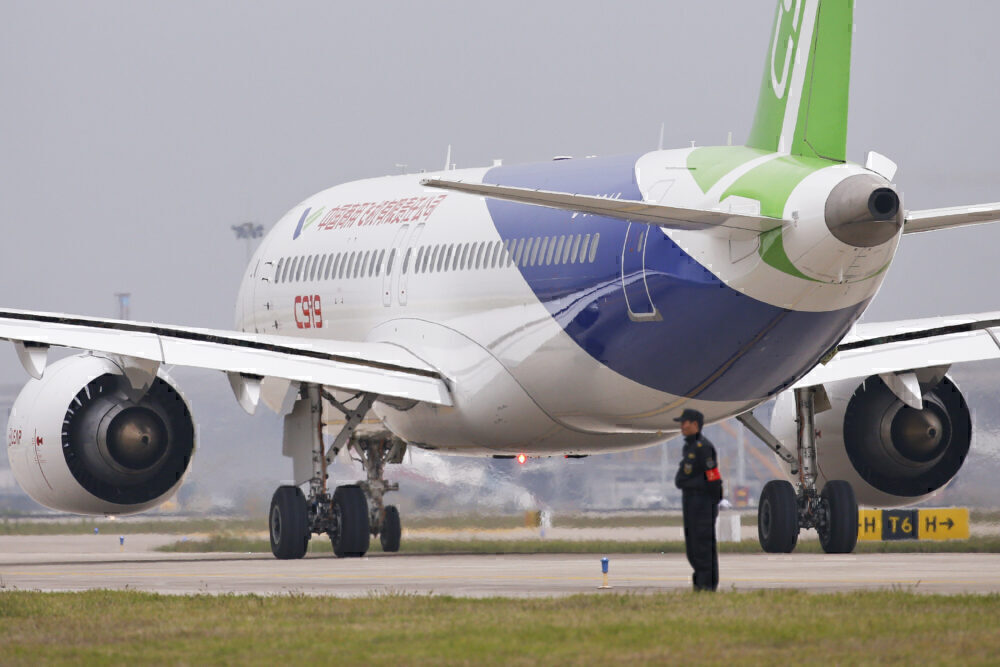[ad_1]
COMAC’s C919 is set to make its first flight outside of China since 2017. The aircraft will head to Canada for natural icing flight tests. The testing is due to begin in March in London, Ontario, Canada. However, ongoing global travel restrictions may mean the tests don’t occur until fall.

COMAC is one step closer to certifying its new C919 aircraft, something it hopes to achieve this year. The International Test Pilots School (ITPS) at London International Airport in Ontario, Canada, will begin testing the aircraft within the new few months.
In a statement on its website, the ITPS said it is “providing logistics as well as a test pilot and meteorologist services in support of the trial.”
The aircraft completed cold-weather testing in Inner Mongolia, China, in December of last year. The upcoming natural icing test flights are some of the final test flights to take place before certification of the aircraft.
They determine that the proposed aircraft can fly under certain weather conditions. If the tests go well, COMAC will be on track for certification and delivery this year.

Stay informed: Sign up for our daily aviation news digest.
What are natural icing tests?
London, Ontario, is not as cold as where the plane underwent cold-weather testing. The city has an average temperature of minus 10 degrees Celsius in February, rising to minus four degrees Celsius in March.
Unlike cold-weather testing, natural icing testing examines what happens when a build-up of ice occurs on aircraft parts. Aircraft also undergo simulated icing testing in which icy clouds of created in tunnels specifically for testing.
All aircraft must show they can withstand and then shed layers of ice without any impact on performance. The C919 will be testing for engine power and performance, flap maneuverability, radar checks, as well as checking the movement of moving parts such as rotor blades.
Checks also take place to examine where ice can build up due to condensation and identify potential areas of damage as ice forms and expands, putting additional stress on some parts. Further testing shows the effect of freezing, melting, and then refreezing on seals.

A Chinese aircraft?
The C919 is the Commercial Aircraft Corporation of China (COMAC) Chinese competitor to narrowbody Boeing and Airbus aircraft. COMAC was set up in 2008, and the C919 has been over a decade in the making. With 305 firm orders, COMAC is hoping to get certification over the coming months with the aim of delivering the first aircraft to launch customer China Eastern Airlines later this year.
With the C919 so close to certification is will be interesting to see if it really can compete against Boeing and Airbus on the international market. Currently, most orders for the type are from Chinese carriers. Although the aircraft itself is Chinese, many of the individual parts are not.
The landing gear, APU, and Electric system come from Honeywell in the US. Another US company Rockwell Collins provides the weather system, and yet another US company Parker Aerospace has provided the fuel system. The wing-anti icing system, which is due to be tested in Canada, actually comes from the German company Liebherr.
What do you think of the C919? Are you excited to see how it fares after certification? Let us know your thoughts in the comments.
[ad_2]
Source link Google News
